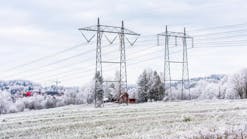The Transmission Grid Needs Focused Planning with an Emphasis on Resilience
Delivery of electricity is an essential service, one that provides for the well-being of our modern society. This is evident whenever severe weather or natural disasters occurs; the first order of business for public health and safety is to restore the electric grid.
It can be argued that the electric system is just as important to the digital and traditional aspects of our economy, as roads and bridges are to physical commerce. On a daily basis, business and consumer discussions focus on new technologies and services that are becoming more solely dependent on a digital economy. This underscores that the reliability of our electric system is paramount. The challenge is to make sure the focus on the grid’s resilience doesn’t wane when threats subside.
The electric system is composed of generation, transmission and distribution. Without transmission, generation cannot be delivered to customers. Consequently, the transmission system presents not only the most immediate resilience challenge, but also the greatest opportunity to strengthen our electric system and economy in response to a wide range of threats. Transmission is important for resilience and improving transmission will make the most impact on enhancing resilience for customers.
Historically, transmission planning has focused on electric reliability, or the ability of the electric system to withstand a sudden disturbance and still meet demand, and the ability to plan for and keep energy supply and demand in balance in the long term.
Resilience, on the other hand, is the ability to bounce back quickly from large, infrequent catastrophic events. A resilient power grid can withstand or quickly recover from such events, and considers and mitigates key system vulnerabilities. It is the ability to withstand and reduce the magnitude and duration of disruptive events, which includes the capability to anticipate, absorb, adapt to and rapidly recover from an event.
A robust transmission system lowers vulnerability to individual or widespread generator outages and facilitates access to a more diverse portfolio of energy resources and more options in the event of an emergency. Since electric power disruptions are most likely to arise through the failure of distribution and transmission systems, critical transmission infrastructure plays a key role in supporting overall system resilience.
To achieve resilience we need to be proactive in planning the transmission grid.
WIRES anticipates that, together with reliability issues, the economic benefits of a more integrated system, the need to deploy and dispatch new technologies, the bulk power market’s evolution, and public policy, transmission development will be driven by the need for greater resilience to support continuous delivery of electricity.
Proactive transmission planning must be integral to any resilience strategy. Existing transmission planning processes, which have historically focused on reliability, economics, and public policy, are not designed to address resilience as a key matter. Resilience must now be considered as a transmission planning driver. It’s time for Regional Transmission Organizations to incorporate resilience planning into their regional and interregional transmission planning processes in a way that is appropriate for their regions.
The Federal Energy Regulatory Commission should take measures to encourage such planning and coordination by clarifying that it has authority under the Federal Power Act to include resilience in its transmission planning guidance, and by updating its planning principles to include resilience as a separate and distinct planning driver.
FERC also should clarify that regional planning responsibilities of Regional Transmission Organizations and Independent System Operators includes planning for resilience. It is WIRES' view that this clarification needs to address the prevention or mitigation of loss or disruption of critical transmission infrastructure and its services.
In short, we must ensure that planning processes exist that will directly address grid resilience, because over the long term, proactive transmission planning is the most effective way to ensure a resilient electric system.
It takes time to plan so it’s critical we maintain a sense of urgency when it comes to creating a planning environment to build more resilience into the transmission grid. A recent LEI study underscores that proactive planning can bring more than $62 million in benefits to customers – this doesn’t even include the benefits that a more resilient grid could provide by avoiding costs associated with prolonged outages.
WIRES believes grid resilience will only increase in importance as the economy continues to become more dependent on an even higher level of reliable electric power than was seen in the past. At the same time, cyber and physical threats, as well as natural events of unparalleled ferocity and unpredictability pose new challenges to our increasingly electrified economy.
Let’s continue to ensure that the first order of business for public health, safety, and a strong economy is to develop and safeguard we have a resilient electric grid that will support a more intensely electric and economically dynamic future.


